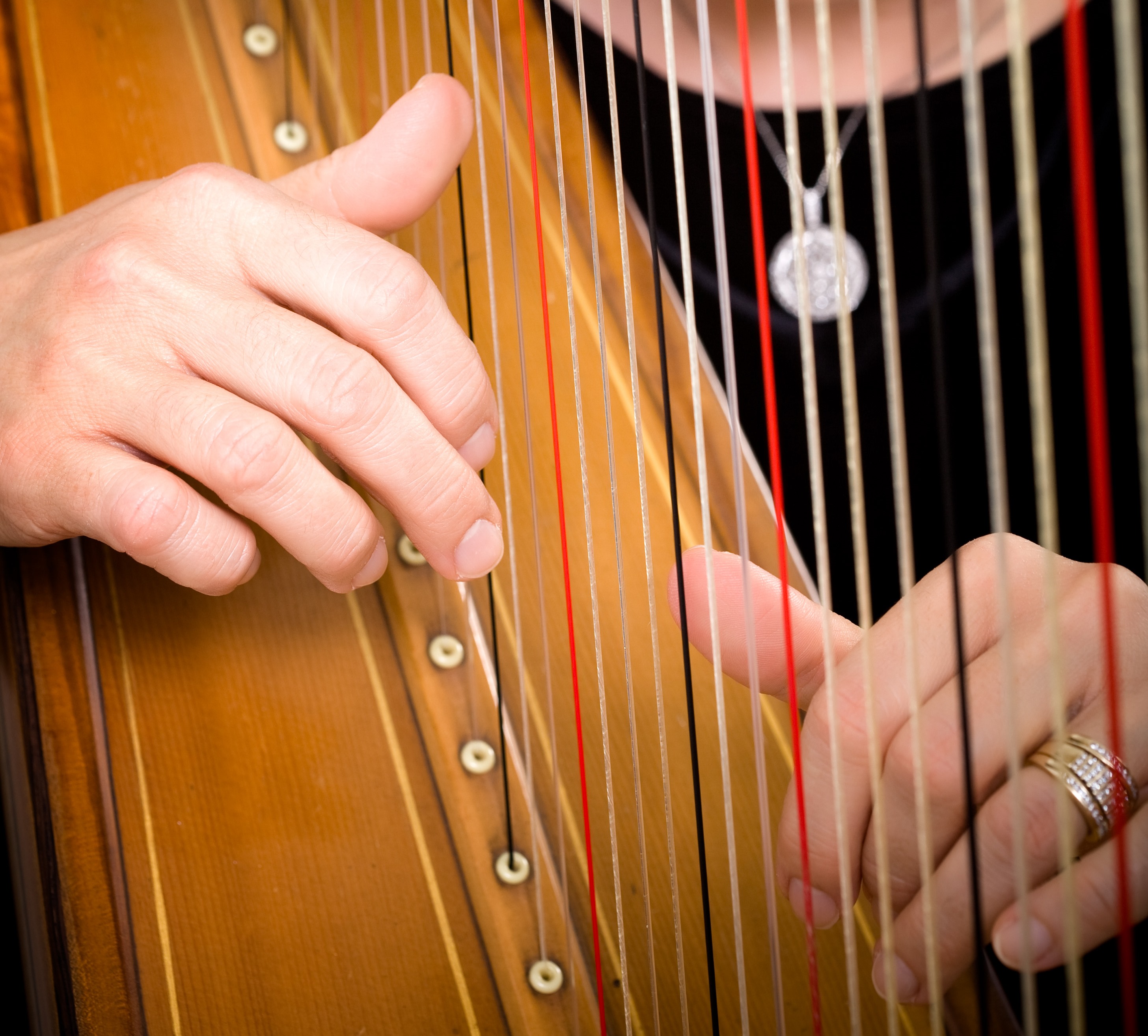Note: The original expletive used in this music lesson is represented with a _____ to respect the readers and integrity of this publication. The use of expletives in this trauma-informed music setting was established years ago as an acceptable, safe, and healing way to transform emotional energy.
Expanding a paradigm
What comes to mind when you hear the word harp? ~ angels, heaven, relaxation, meditation?
That’s what a lot of people think, including a therapist one of my harp students knew. He was so stuck in his paradigm he couldn’t understand when she told him she gets angry and pissed off when she plays the harp. “You’re supposed to be calm and relaxed when you play,” he told her. “Not with my teacher,” she tried to explain.
This therapist’s resistance to expand his perception and see beyond what was familiar to him created frustration in my student, Karen. His paradigm prevented him from supporting her as a therapist and, as a result, triggered within her more anger and feelings of not being heard or seen.
Trauma-Informed Care
Trauma-informed care is gaining increased acceptance as more people recognize that individuals bring with them their entire history of experiences into a current situation, including Adverse Childhood Experiences (ACE) – potentially traumatic experiences that occur to people under the age of 18.
Trauma-informed care involves a heightened sensitivity within an environment – where a teacher, therapist, instructor, or friend sees beyond what is happening in the moment. They are aware that someone’s reaction(s) or behavior is a culmination of previous experiences, choices, feelings and consequences.
This article by Monique Tello, MD, MPH, Trauma-informed care: What it is, and why it’s important, offers additional insight.
Something deep inside Karen knew that playing harp would ease her migraines, lessen her emotional and physical pain, and help her move through the fears and past traumas that kept her from living her life fully. The fact that she was a grandmother who had never played music didn’t stop her from reaching out and calling to set up her first lesson. From day one, we both knew her harp lessons were life lessons.
Vibrational Awareness
We talk weekly about vibrational awareness and how everything is energy. One of our first conversations sounded like this:
“Imagine you’re a harp and all of your thoughts, experiences, feelings, ideas, fears, concerns, joys, everything is represented as a different string.
Now imagine that something really painful or scary happened to you, or maybe it was something exciting and overwhelming. Picture that experience as one of the strings on the harp. Because it’s something that either scared or overwhelmed you, you don’t like to play that string any more. In fact, you’d like to take that string off the harp and forget about it forever. However, that’s not how this harp works and you have to keep the string.
You go along for days, months, maybe even years not playing that string, trying to avoid remembering that really scary or overwhelming thing that happened. Then one day you accidentally pluck that string and all of those past memories come flooding back into your mind. What do you do with all of those feelings, emotions, pictures, and memories?”
Sympathetic Resonance
The concept we’re metaphorically talking about is sympathetic resonance – when two objects of the same frequency come into close proximity to each other they create a resonant system or begin to sing together.
This is what happens for Karen when she plays harp; the vibrations of the strings begin to sympathetically resonate emotional energy within her that is ready to come to conscious awareness. It happens most often with basic exercises because once her fingers are comfortable with a pattern, her mind relaxes and the energy starts to move. It’s magical to witness how her fingers are intimately connected to her brain patterns. Let me share an example.
Recognizing Repressed Energy
Last week Karen was working on a 4 finger pattern moving from 4, 3, 2, then the thumb (with harp, we only use 4 fingers because the pinky finger is too short to reach the strings). This pattern called for the replacement of the 3rd finger prior to playing the thumb. Yes, the middle finger needed to extend. She tried and tried to isolate the 3rd finger but the 4th finger kept extending.
I immediately saw what was happening, stopped the lesson, and asked, “OK, Karen, who do you want to say ‘____ you’ to?” We laughed because we both knew that was the hook-up. I “flipped her off” to mirror the hand position and literally began yelling, “____ you!” over and over again. Her face turned red, her hands tried to move into position, and the energy started to flow. Welcome to Karen’s harp/life lesson!
Allowing Energy to Express
The honest sacred space we create each week allowed for our passionate duet of “____ you’s” to fill the house with free abandonment – no judgment, no resentment, no fear of reciprocation – only the energy of repressed emotions freely given the opportunity to express in a safe and loving environment.
Eventually her hands moved into position as she found her voice; fear, anger, resentment, laughter and relief simultaneously moved through this courageous woman. The desire to experience life fully and express her love unconditionally inspires her to travel into her fears with grace and self-compassion.
We returned to the harp exercise and voila, her fingers moved with confidence, strength, and conviction through each pattern – which was not a surprise because this type of profound connection happens almost weekly.
Music is a magical reflection of life, especially when we’re able to perceive beyond the obvious.
It’s a joy, blessing, and honor to walk into the unknown with my students as they rediscover and remember their wholeness, harmony, compassion and self-love through music.
Portions of this article was originally published on Musicians Unite under the title: Learning Music Teaches Us Life Lessons


